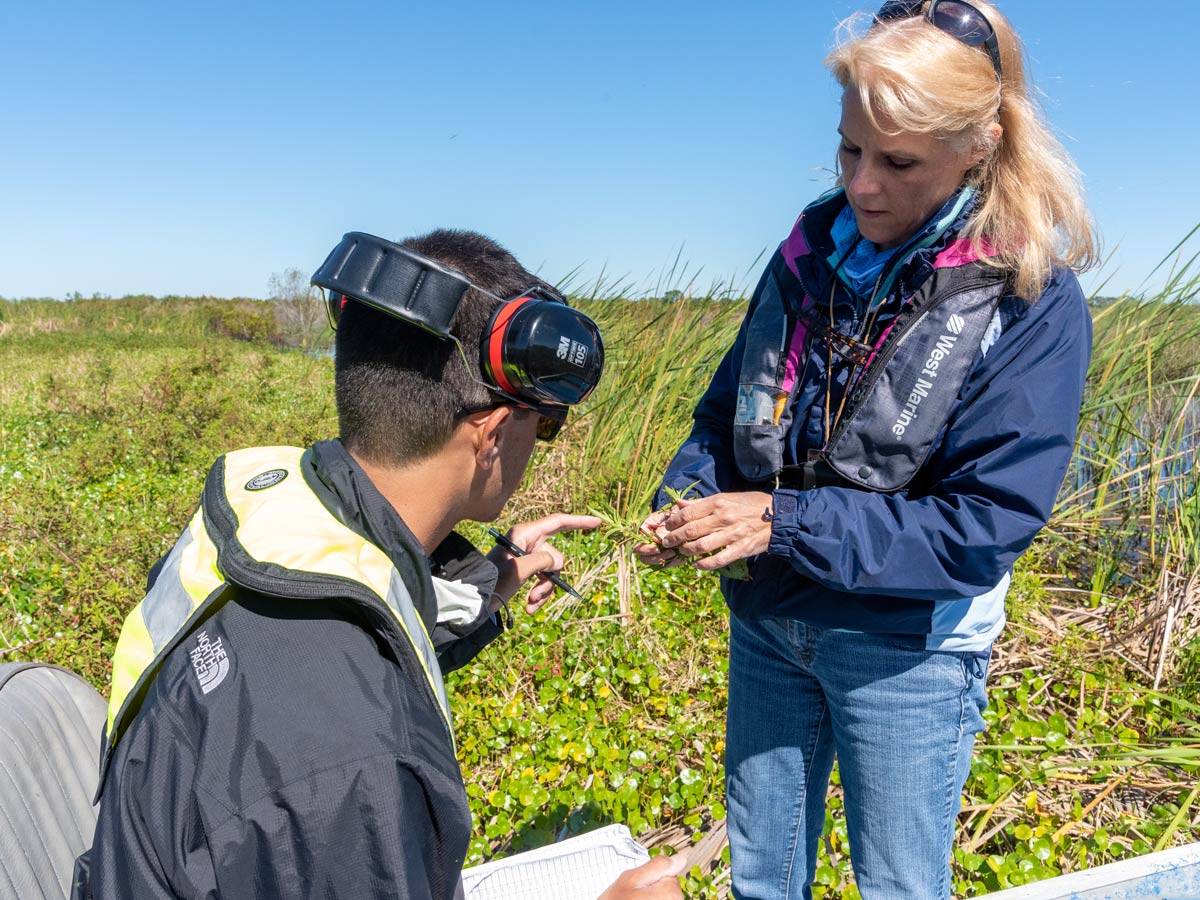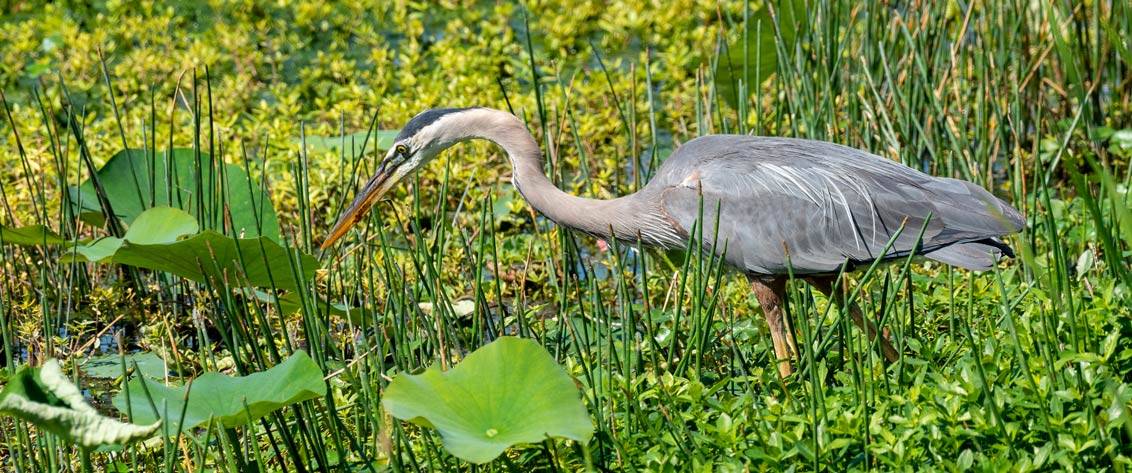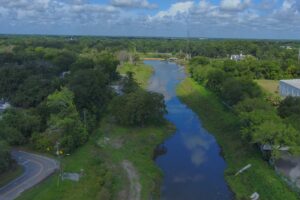Celebrate World Wetlands Day
Feb. 1, 2024
District Environmental Scientist V Kimberli Ponzio and Land Resource Specialist Ali Simpson examine vegetation in the Upper St. Johns River Basin as part of a mapping project.
What do swamps, marshes, bogs and bayous all have in common? If you guessed that they are all types of wetlands, then you probably already understand just how important they are. Wetlands are some of the most valuable ecosystems on the planet. World Wetlands Day, celebrated worldwide each year on Feb. 2, aims to raise awareness of these dynamic environments and give them a voice.
Found both inland and in coastal areas, wetlands provide numerous benefits to the environment. They filter pollutants from surface waters, recharge groundwater, stabilize shorelines, store water after heavy rains, and support the plants and animals that reside in them. Communities that have well-managed wetlands are better equipped to handle extreme weather events. Wetlands also provide endless opportunities for recreation and ecotourism, like birding, fishing, hunting, boating, hiking and more.
They sound pretty great, right? Unfortunately, wetlands were once regarded as wastelands and nothing more than breeding grounds for mosquitoes. Millions of acres were destroyed before their value was appreciated. From the 1800s to the 1980s, it was common practice to drain wetlands, fill them or treat them as dumping grounds. In 1984, the Florida Legislature enacted the Warren S. Henderson Wetland Protection Act. Since then as part of our core mission work, the St. Johns River Water Management District and its many partners have worked and continue to work to reverse the damage done to inland and coastal wetlands to recover the natural and economic benefits they provide.
As part of this work, the District partnered with Putnam and St. Johns counties to build two unique water treatment systems that mimic natural wetlands. As examples of freshwater projects, Deep Creek West (a.k.a., Yarborough tract) and Dog Branch (a.k.a., Edgefield tract), water treatment systems filter and remove nutrients. Water winds through a series of retention ponds where solids settle out, then filters through artificial wetlands where plants absorb dissolved nutrients before the water reaches the St. Johns. In the Upper St. Johns River Basin, the District has restored over 160,000 acres of wetlands from former agricultural lands. Partially funded by USDA Natural Resources Conservation Service grants, Six Mile Creek, Broadmoor and Moccasin Island Marsh restoration areas have been restored to marsh and now provide water storage and, recently, habitat for the endangered snail kite. Examples of coastal wetlands restoration include the Flagler Coastal Wetland Restoration project, a collaborative effort with the U.S. Fish and Wildlife Service, Florida Department of Environmental Protection, Florida Fish and Wildlife Conservation Commission and the Florida Park Service to restore over 95 acres of dragline-impacted marsh. These restored coastal wetlands filter pollutants from the water, serve as a nursery for fish, and provide wildlife habitat. These are just a few examples of the District’s wetland restoration efforts.
This year’s World Wetlands Day campaign spotlights how interconnected wetlands and human life are. People draw sustenance, inspiration and resilience from these significant ecosystems. World Wetlands Day calls on each of us to value and steward our wetlands. What can you do to support the wetlands? Here are a few ideas:
- Reduce or eliminate lawn fertilizer. Nitrogen and phosphorus pollution comes from many sources, including the fertilizers used on lawns and in landscaping. Using fertilizers only when lawns show a particular nutrient deficiency and using chemicals responsibly can benefit our waterways. Learn more here.
- Clean up after pets. Pet waste that owners leave on the ground can be picked up by stormwater runoff and make its way into nearby streams, lakes and rivers, either directly or via a storm sewer system. Pet waste in water bodies can promote weed and algae growth and harm the health of the ecosystem in and around the water.
- Conserve water inside and outside the home. Learn more here.
- Donate time or money. Participate in programs that help protect and restore wetlands, like beach cleanups and community plantings. Contact local, state or federal agencies, community groups, environmental organizations and other non-government organizations. If you don’t have time to volunteer, making a monetary donation to a local organization that supports wetlands is another option.
- Go into a career working with wetlands. There are many career opportunities for those interested in working with wetlands, including working for the District.
- Enjoy the scenic and recreational opportunities wetlands have to offer. Visit the District recreation webpage for information and locations for fishing, hunting, birding, camping, boating or hiking. Be sure to practice “leave no trace” recreation when visiting.
Whatever you do, remember, every wetland matters and every effort counts!
Learn more about wetlands
- Official website of World Wetlands Day by Ramsar
- Webinar on wetlands
- Overview of wetlands
- Build a model wetland – activity idea for parents and teachers
- Bringing back coastal wetlands – an interactive storymap
Wildlife drives with wetlands you can visit – Lake Apopka Wildlife Drive and Emeralda Marsh seasonal interpretive drive







